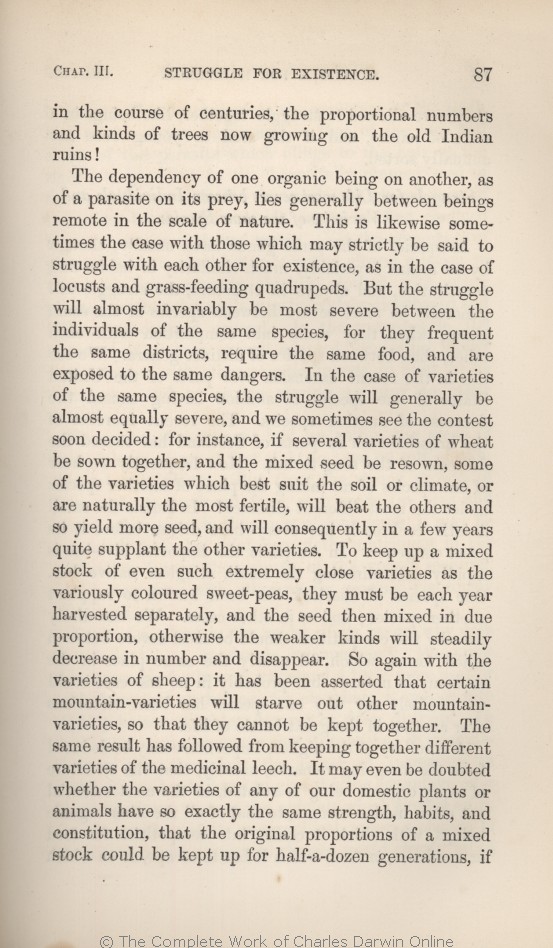|
proportional numbers and kinds of trees now growing on the old Indian ruins! |
|
The dependency of one organic being on another, as of a parasite on its prey, lies generally between beings remote in the scale of nature. This is
likewise sometimes | likewise sometimes 1869 1872 | | often 1859 1860 1861 1866 |
| strictly be 1859 1860 1861 1866 1869 | | be strictly 1872 |
| will almost invariably 1869 1872 |
| almost invariably will 1859 1860 1861 1866 |
| quite 1859 1860 1861 1866 1869 | quite 1872 |
| variously coloured 1859 1860 1861 1866 1869 | | variously-coloured 1872 |
| proportion, 1860 1861 1866 1869 1872 | | propor- tion, 1859 |
| number 1866 1869 1872 | | numbers 1859 1860 1861 |
| sheep: 1859 1860 1861 1866 1869 | | sheep; 1872 |
| ..... 1869 1872 | | one 1859 1860 1861 1866 |
| could 1859 1860 1861 1866 1869 |
| (crossing being prevented) could 1872 |
| half-a-dozen 1860 1861 1866 1869 1872 |
| half a dozen 1859 |
|









